 |
King of Chemicals Manufacturers |
Specifications, Properties, Uses, SDS of Gliclazide BP Ph Eur EP IP Grade Manufacturer Supplier Exporter Wholesale & Small Packs, CAS Number 21187-98-4. |
|
| King of Chemicals has several associated companies having accreditations like cGMP, GLP - FDA Approved Good Manufacturing Practice and Good Laboratory Practice of WHO standard, ISO-9001, ISO-14001, ISO/IEC 17025, ISO ISO-45000, HACCP, FSSC 220000, FSSAI, "REACH" Registered, Kosher & Halal Certified. e-CTD and DMF support can be made available if needed. We offer USP NF BP Ph Eur EP IP JP Analytical Reagent FCC Food Grade Chemicals & Nutraceuticals. | |
        |
|
Muby Chem Pvt. Ltd. is a several decades old group of companies, engaged in manufacturing, supplying, distributing, wholesale supplies of Gliclazide BP Ph Eur EP IP Grade for actual users, including retail or small pack supplies for research and development work.
We supply fine and speciality chemicals, pharmaceutical excipients, mineral fortifiers in chemically pure, analytical reagent grade, IP BP USP Ph Eur EP JP and other pharmaceutical grade monograph including FCC Food grade chemicals and Nutraceuticals at best prices. We and/or our associated units have all the facilities to supply as per cGMP standard observing good manufacturing practice and good laboratory practice. We can assure low microbial count and also offer a test certificate for the same. We maintain warehouses across USA, India, and UAE. Our group exports to USA, Canada, Mexico, Argentina, Brazil, Chile, Korea, Malaysia, Thailand, Indonesia, Europe, and several other parts of the world. We supply in wholesale container loads to small pack of few grams. Solid products may be specified for it size and shape as desired by the buyer.
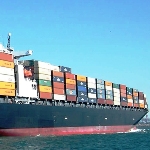
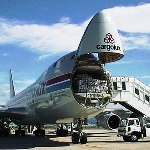
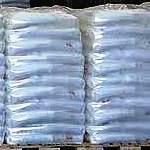
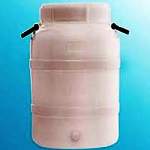
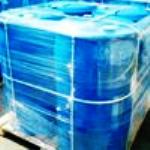
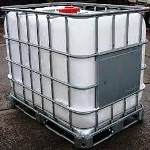
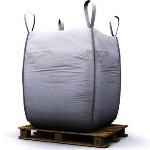
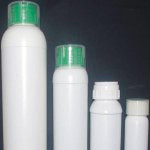
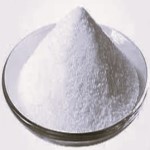
Gliclazide CAS Number 21187-98-4
For Properties Specifications Uses of Gliclazide Click Properties, Specifications, Uses, Price, Process of Gliclazide Manufacturer.
For For SDS MSDS Sheet of Gliclazide Click SDS Safety Data Sheet MSDS Sheet of Gliclazide Manufacturer.
The Properties, Specifications, Monograph and Uses of Gliclazide:
Gliclazide is used to treat type 2 diabetes. It's a medicine known as a sulfonylurea.
Gliclazide BP Ph Eur Grade Specifications:
C15H21N3O3S --- 323.4 CAS 21187-98-4
Action and use: Inhibition of ATP-dependent potassium channels (sulfonylurea); treatment of diabetes mellitus.
DEFINITION
1-(Hexahydrocyclopenta[c]pyrrol-2(1H)-yl)-3-[(4-methylphenyl)sulfonyl]urea.
Content: 99.0 per cent to 101.0 per cent (dried substance).
CHARACTERS
Appearance: White or almost white powder.
Solubility: Practically insoluble in water, freely soluble in methylene chloride, sparingly soluble in acetone, slightly soluble in ethanol (96 per cent).
IDENTIFICATION
Infrared absorption spectrophotometry.
TESTS
Related substances: To pass the test by Liquid chromatography.
Impurity B: To pass the test by Liquid chromatography.
Loss on drying: Maximum 0.25 per cent, determined on 1.000 g by drying in an oven at 105C for 2 h.
Sulfated ash: Maximum 0.1 per cent, determined on 1.0 g.
Gliclazide is also offered as per EP IP grade monograph.
The MSDS-SDS Hazard Statement of Gliclazide:
Gliclazide SDS, Safety Data Sheet
MSDS Sheet, Material Safety Data Sheet 28-Mar-25
1. Product Identification
Product Name/Synonyms: Gliclazide.
CAS No.: 21187-98-4
EINECS EC Number: 244-260-5
Relevant uses and uses advised against (if any): Industrial Manufacturing.
Suppliers: As per letterhead.
2. Hazards Identification
GHS, Globally Harmonized System Classification in accordance with 29 CFR 1910
Classification according to Regulation (EC) No 1272/2008
Acute toxicity, oral Category 4
Labeling according to Regulation (EC) No 1272/2008
GHS Label Elements 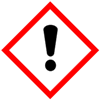 Irritant |
Signal Words: Warning
Hazard statements:
H302: Harmful if swallowed.
Precautionary statements:
P262: Do not get in eyes, on skin, or on clothing.
P280: Wear protective gloves/protective clothing/eye protection/face protection.
P270: Do not eat, drink or smoke when using this product.
P273: Avoid release to the environment.
P301+312: IF SWALLOWED: Call a POISON CENTER or doctor/physician if you feel unwell.
P332+313: If skin irritation occurs: Get medical advice/attention.
P302+P352: IF ON SKIN: Wash with plenty of soap and water.
P305+P351+P338: IF IN EYES: Rinse cautiously with water for several minutes. Remove contact lenses, if present and easy to do. Continue rinsing.
P337+P313: If eye irritation persists: Get medical advice/ attention.
3. Composition/Information on Ingredients
Product Name/Synonyms: Gliclazide.
CAS No.: 21187-98-4
EINECS EC Number: 244-260-5
4. First Aid Measures
Inhalation: Remove to fresh air. Give oxygen if breathing is difficult; give artificial respiration if breathing has stopped. Keep person warm and quiet; get medical attention.
Ingestion: Induce vomiting immediately as directed by medical personnel. Never give anything by mouth to an unconscious person.
Skin Contact: Immediately flush skin with plenty of soap and water for at least 15 minutes. Get medical attention if irritation develops.
Eye Contact: Immediately flush eyes with plenty of water for at least 15 minutes, lifting upper and lower eyelids occasionally. Get medical attention.
5. Fire Fighting Measures
Fire: It is not considered to be a fire hazard. However, it will burn at high temperature.
Fire Extinguishing Media: Use water spray, alcohol-resistant foam, dry chemical, or carbon dioxide. Avoid solid water jets. Use water spray to cool fire-exposed containers.
Special hazards arising from the substance or mixture: Carbon oxides, Nitrogen oxides (NOx), Sulphur oxides, Fumes.
Special Information: In the event of a fire, wear full protective clothing and NIOSH-approved self-contained breathing apparatus with full face piece.
6. Accidental Release Measures
Personal precautions, protective equipment, and emergency procedures: Use personal protective equipment. Ventilate area of leak or spill. Avoid breathing dust/fumes/gas/mist/vapors/spray. Use individual protective equipment (waterproof boots, suitable protective clothing, safety glasses, etc.).
Environmental precautions: Do not let the product enter drains, soil, or water sources.
Methods and materials used for containment cleanup procedures and Storage: Contain spilled material. Pick up spills and place them in a suitable container for reclamation or disposal, using a method that does not generate dust.
7. Handling and Storage
Precautions for safe handling: Apply according to good manufacturing and industrial hygiene practices. Ensure proper ventilation. Wear personal protective equipment. Avoid ingestion and inhalation. Do not drink, eat, or smoke while handling. Avoid contact with skin, eyes, and clothing. Minimize dust generation. Avoid breathing dust/fumes/gas/mist/vapors/spray. Keep container tightly closed. Avoid ingestion and inhalation. Use individual protective equipment (waterproof boots, suitable protective clothing, safety glasses, etc.).
Conditions for safe storage, including any incompatibilities: Store in cool, dry, and ventilated area away from heat sources and protected from sunlight in tightly closed original container. Keep air contact to a minimum. Do not leave the material container open. Store protected from heat, sparks and ignition sources and incompatible materials. Avoid inhalation of dust/mist/vapor. Do not store with incompatible materials like strong oxidizing agents. Avoid dust formation and control ignition sources. Storage: Room Temperature. Recommended in a cool and dark place, <15C.
8. Exposure Controls/Personal Protection
Airborne Exposure Limits: None established.
Ventilation System: In general, dilution ventilation is a satisfactory health hazard control for this substance.
Personal Respirators (NIOSH Approved): Not expected to require personal respirator usage. For conditions of use where exposure to dust or mist is apparent and engineering controls are not feasible, a particulate respirator (NIOSH type N95 or better filters) may be worn.
Skin Protection: Wear protective gloves and clean body-covering clothing.
Eye Protection: Use chemical safety goggles and/or full-face shield where dusting or splashing of solutions is possible. Maintain eye wash fountain and quick-drench facilities in work area.
9. Physical and Chemical Properties
Appearance: White to almost white powder or crystals.
Odor: No data found.
Odor threshold: No data found.
pH: No data found.
Relative density: No data found.
Boiling Point: No data found.
Melting Point: 163C to 171C literature.
Flash point: No data found.
Auto-ignition temperature: No data found.
Decomposition temperature: No data found.
Upper/lower flammability or explosive limits: No information found.
Vapor pressure: No data found.
Vapor density: No data found.
Evaporation rate: No data found.
Flammability (solid, gas): No data found.
Partition coefficient: n-octanol/water: No data found.
Solubility: Poorly soluble in water. Slightly soluble in ethanol and methanol. Soluble in chloroform.
Viscosity: No data found.
10. Stability and Reactivity
Stability: Stable under ordinary conditions of use and storage.
Hazardous Decomposition Products: May produce oxides of nitrogen, sulfur, and carbon along with fumes when heated to decomposition.
Hazardous Polymerization: Will not occur.
Incompatibilities: Strong oxidizing agents.
Conditions to Avoid: Heat, flame, ignition sources, dusting, and incompatibles.
11. Toxicological Information
Toxicity Data: LD50 Oral Mouse: 1750 mg/kg.
Carcinogenic Effects: Not a reported carcinogen by IARC, NTP, ACGIH, OSHA.
Mutagenic Effects: No data found.
Reproductive Effects: No data found.
Developmental Effects: No data found.
12. Ecological Information
Environmental Fate: No data found.
Persistence and degradability: Unlikely to persist.
Bioaccumulative potential: No data found.
Mobility in soil: Likely to be mobile.
PBT and vPvB assessment: No data found.
13. Disposal Considerations
Whatever cannot be saved for recovery or recycling should be managed in an appropriate and approved waste disposal facility. Follow all the pollution controol rules.
14. Transport Information
Land Transport DOT USA, TDG Canada & ADR/RID Europe: Not controlled.
Sea Transport IMDG/IMO: Not controlled.
Air Transport IATA/ICAO: Not controlled.
15. Regulatory Information
USA:
SARA 311/312 Hazardous Categorization: Acute health hazard. Harmful.
California Proposition 65: Not listed to cause cancer or birth defects or reproductive harm.
16. Other Information
Disclaimer:
**************************
Our company provides this MSDS sheet in good faith but makes no representation as to its comprehensiveness or accuracy. This SDS sheet is intended only as a guide to the appropriate precautionary handling of the material by a properly trained person using this product. The above information has been compiled from various sources and has the possibility of discrepancy and being out-dated information. Individuals receiving the information must exercise their independent judgment and do further search in determining its appropriateness for a particular purpose. In no case shall our company be liable to loss or damages by the product user.
**************************

Gliclazide Manufacturers, Suppliers, Exporters, Wholesalers:
King of Chemicals manufacturers

Plot No. 2900/46&47 + 2900/163to167, GIDC, Ankleshwar, Dist. Bharuch, India
India, USA, UAE
TEL: (Office) 91-22-23774610, 91-22-23723564
e-mail: info@kingofchemicals.com
Copyright and Usual Disclaimer is Applicable --- March 28, 2025
If I give you “My Word” Nobody can undo it.
If I sign an “Agreement” my Lawyer will undo it
Our products are for industrial and laboratory use only. The user must test the material before use. We are not dispensing chemists or druggist and do not offer over the counter type (OTC) products for medical use by individuals.
We and our associates manufacture pure chemicals surpassing Monograph Specifications of Analytical Reagent Standards, British & European Pharmacopoeia BP Ph Eur EP Standard, US Pharmacopoeia USP NF Standard, Indian Pharmacopoeia IP Standard, Japan Pharmacopoeia JP Standard, FCC Food Grade Standard. |
|